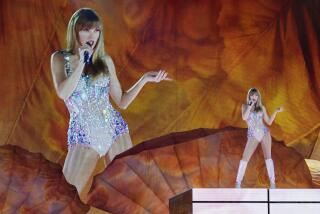BART’s Shining Performance
- Share via
Amid all the transportation troubles that San Francisco Bay Area commuters are enduring in the aftermath of last week’s earthquake, there is one bright spot--the performance of the Bay Area Rapid Transit District’s subway system.
When East Bay residents awoke Monday morning and faced the prospects of trying to get to work with a major bridge and three freeways out of commission, police and traffic engineers feared the worst. It was bad, with traffic clogging the remaining bridges, and rain and rough seas soaking passengers aboard crowded trans-bay ferries. But things kept moving, and a major reason they did was that literally thousands of people who do not normally rely on BART gave the subway system a try and found it worked. BART officials were prepared, and had pressed extra trains and cars into service. They wound up carrying 53,000 more passengers than on a normal day.
There were a few minor glitches. There was standing-room only on most trains, a common annoyance on other urban rail systems but a rarity on BART. Neophyte riders had trouble figuring out the BART ticketing system, and parking was scarce at suburban stations. Clearly, if BART hopes to keep its many new customers, the system will have to be made a bit more “user-friendly.”
But overall, BART has come through the ‘Quake of ’89 with flying colors. Even when the massive temblor hit San Francisco and Oakland at the height of a Tuesday afternoon rush hour, most subway riders were not aware that there had been an earthquake. Damage to the subway was minor and it was back in partial operation by the very next morning.
BART’s performance proves that subways do work, and work quite well, even in car-happy, earthquake-prone California. That should bode well for Los Angeles, once its own Metro Rail system goes into operation sometime in the 1990s.
More to Read
Sign up for Essential California
The most important California stories and recommendations in your inbox every morning.
You may occasionally receive promotional content from the Los Angeles Times.













